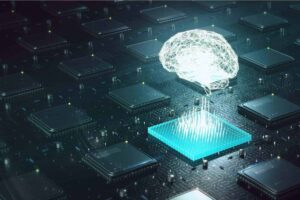Trade Policies and an Increasingly Tense Global Landscape; Pascal’s AI Gamble; Zhipu, Manus, and Taiwan Incursions; Solar Energy Projects, MCP, and Enhanced Communication

Recent Changes in U.S. Tariff Policies
Background on U.S. Tariffs
The United States has recently announced tariff increases that see effective rates at their highest since 1909. This significant amendment in trade policy signals a shift from what Thomas Friedman described as a “flat world,” where global interconnectivity was prioritized, to a new reality, referred to as the “spikier world.” In this new paradigm, economic interactions are more unevenly distributed across regions, which is raising concerns among experts and economists.
Economic Reordering
According to U.S. Treasury Secretary Scott Bessent, we’re on the verge of a “grand economic reordering”. This change is primarily seen as a response to various factors, including the pressure of the COVID-19 pandemic and geopolitical tensions that have exposed vulnerabilities in global supply chains. The tariffs are viewed as a counteraction to the cycle of deindustrialization, rising inequality, and economic fragility that have emerged from previous globalization efforts.
Potential Impacts of the Tariff Changes
The consequences of these new tariffs could be significant. Economists caution that the measures could lead to increased consumer prices and potential job losses within various industries. Some analysts liken these tariffs to a self-inflicted economic wound, suggesting that consequences could worsen if the policies contribute to economic instability.
Transition to a Spikier World
The concept of a spikier world emphasizes that technology and innovation are no longer evenly distributed. With advancements in technologies like artificial intelligence (AI), additive manufacturing, and automation, industries are undergoing a shift towards localized production systems. These technologies promise to enhance capability within regional hubs, thus strengthening domestic industries rather than promoting global supply chains.
The Rise of AI Investment
In addition to changes in trade policy, the tech industry is seeing substantial financial activity, particularly notable with OpenAI. This company recently raised $40 billion, marking one of the largest funding rounds in tech history, suggesting strong investor confidence in AI’s potential. This funding reflects a strategic bet based on the expectation of continuous breakthroughs in AI technology, alongside the commercial viability of current approaches and the need for competitive advantage against open-source alternatives.
Key Considerations for AI Investments
There are three main factors impacting the future success of such investments:
- Technological Advancements: Ongoing breakthroughs in AI will dictate much of the investment’s viability.
- Commercial Potential: The existing AI models need to prove their effectiveness and commercial success.
- Competitive Landscape: OpenAI must defend its position against emerging competitors like DeepSeek, which are moving quickly and often providing robust models at lower costs.
Contrasting Global Strategies
While the U.S. is pushing forward aggressively in the private sector towards artificial general intelligence (AGI), countries like China are adopting different strategies. China’s approach is influenced by government priorities that favor broad AI integration over a singular focus on superintelligence. Initiatives like the “AI+” plan aim to weave AI into multiple sectors, focusing on societal resilience and economic stability rather than racing towards isolated technological breakthroughs.
Regulatory Environment in China
In China, the deployment of AI technologies is subject to strict guidelines and requires government approval, which has implications for how rapidly innovations can be adopted. The emphasis is on sustainable, widespread integration rather than concentrated advancements, aiming to build resilience within local industries through a more balanced approach to technology.
Summary of Current Trends
The landscape of global trade and technological investment is evolving rapidly due to these recent changes. With the shift from a flat to a spikier world, economic policies and technological strategies must adapt to foster innovation and address local capacities effectively. The interplay between tariff policies and aggressive AI investments reflects a complex and dynamic economic environment that is still unfolding.






